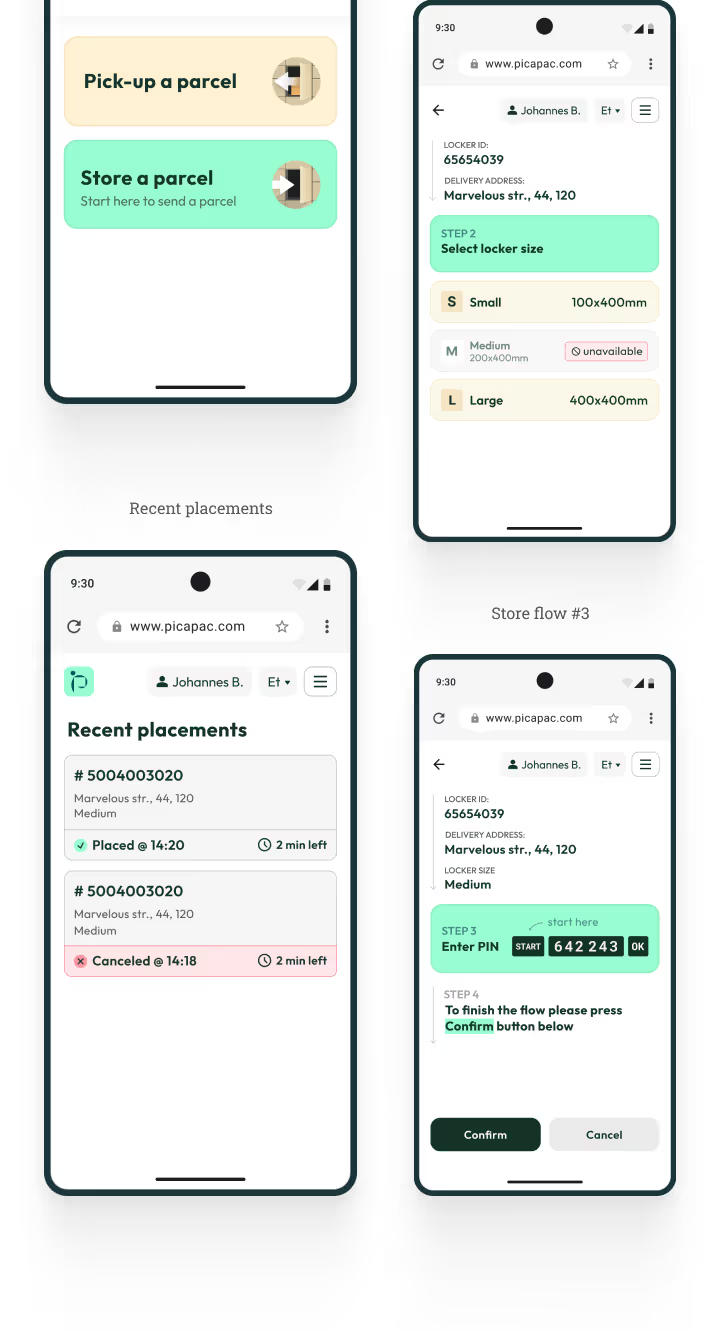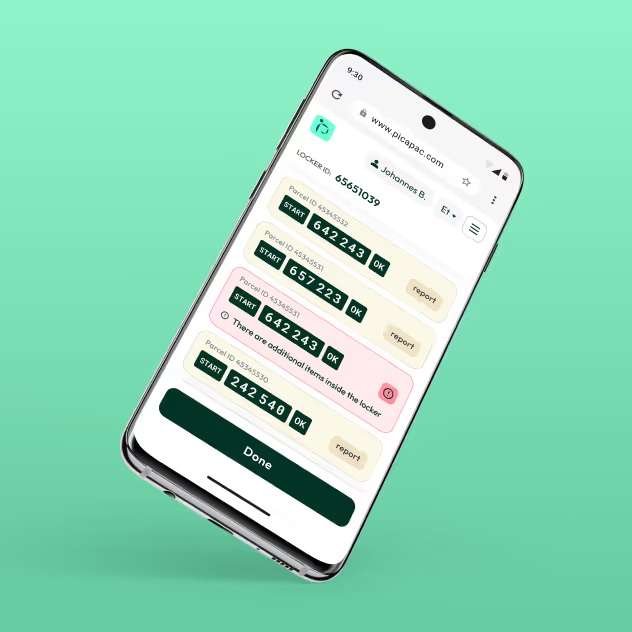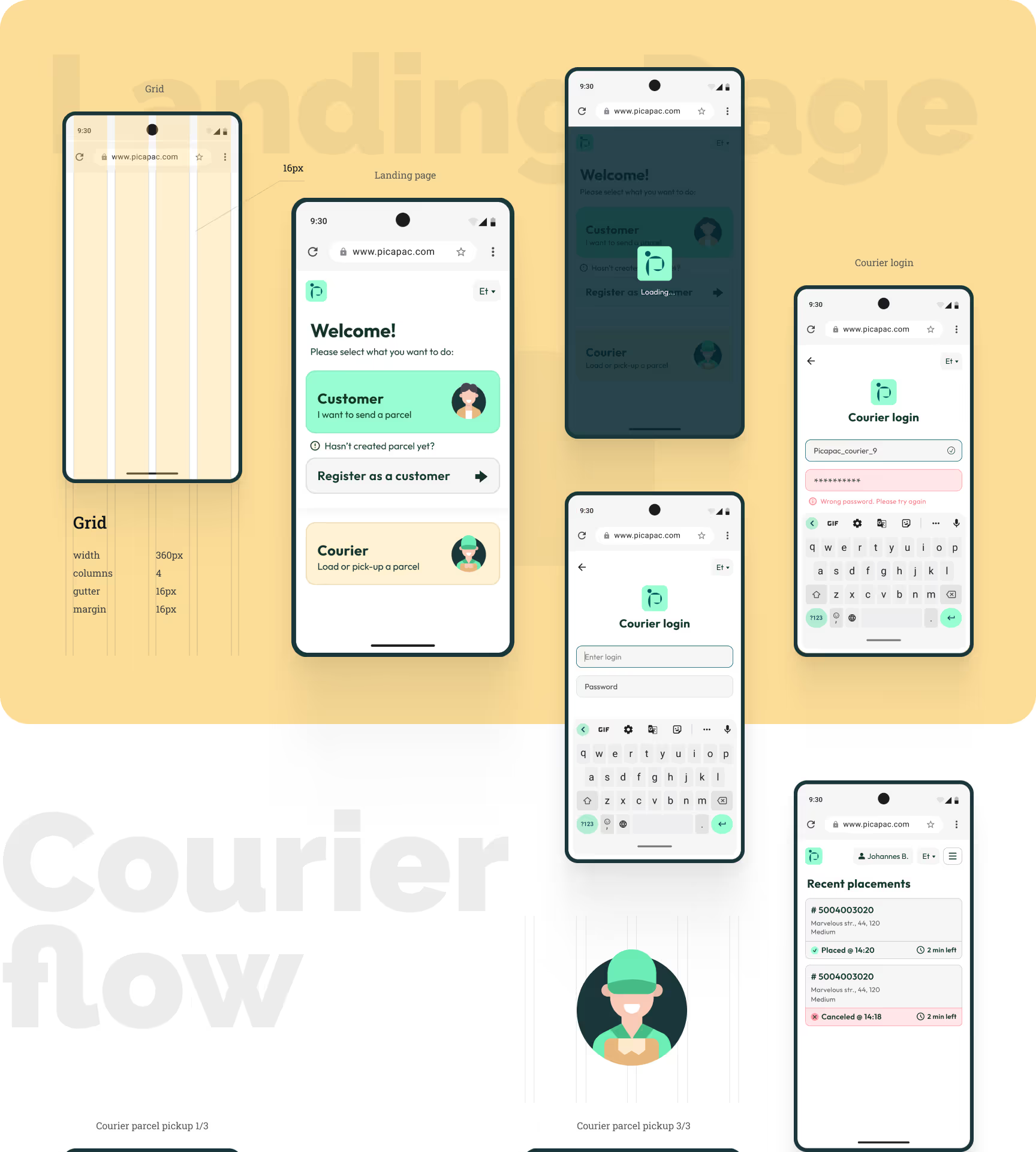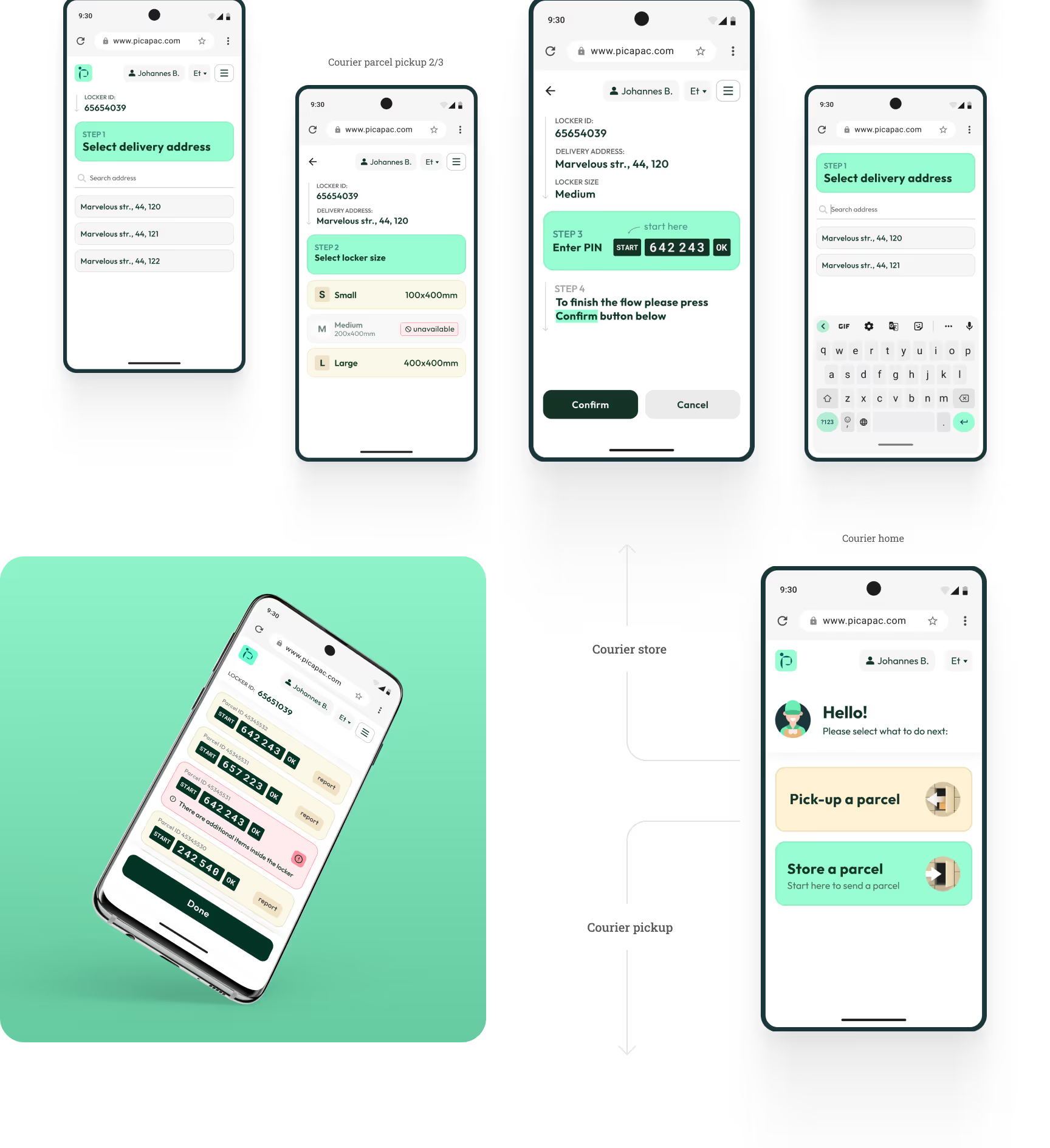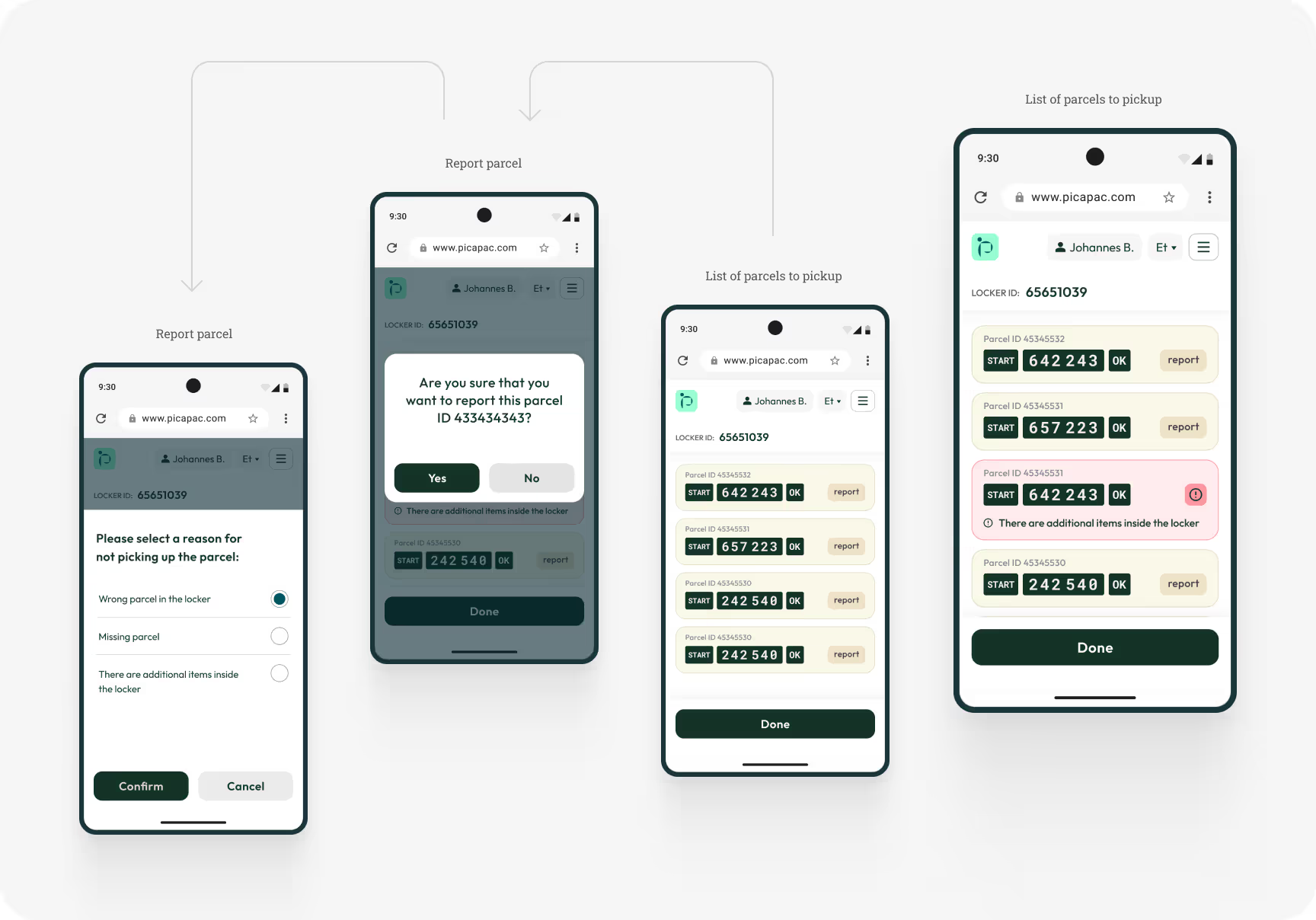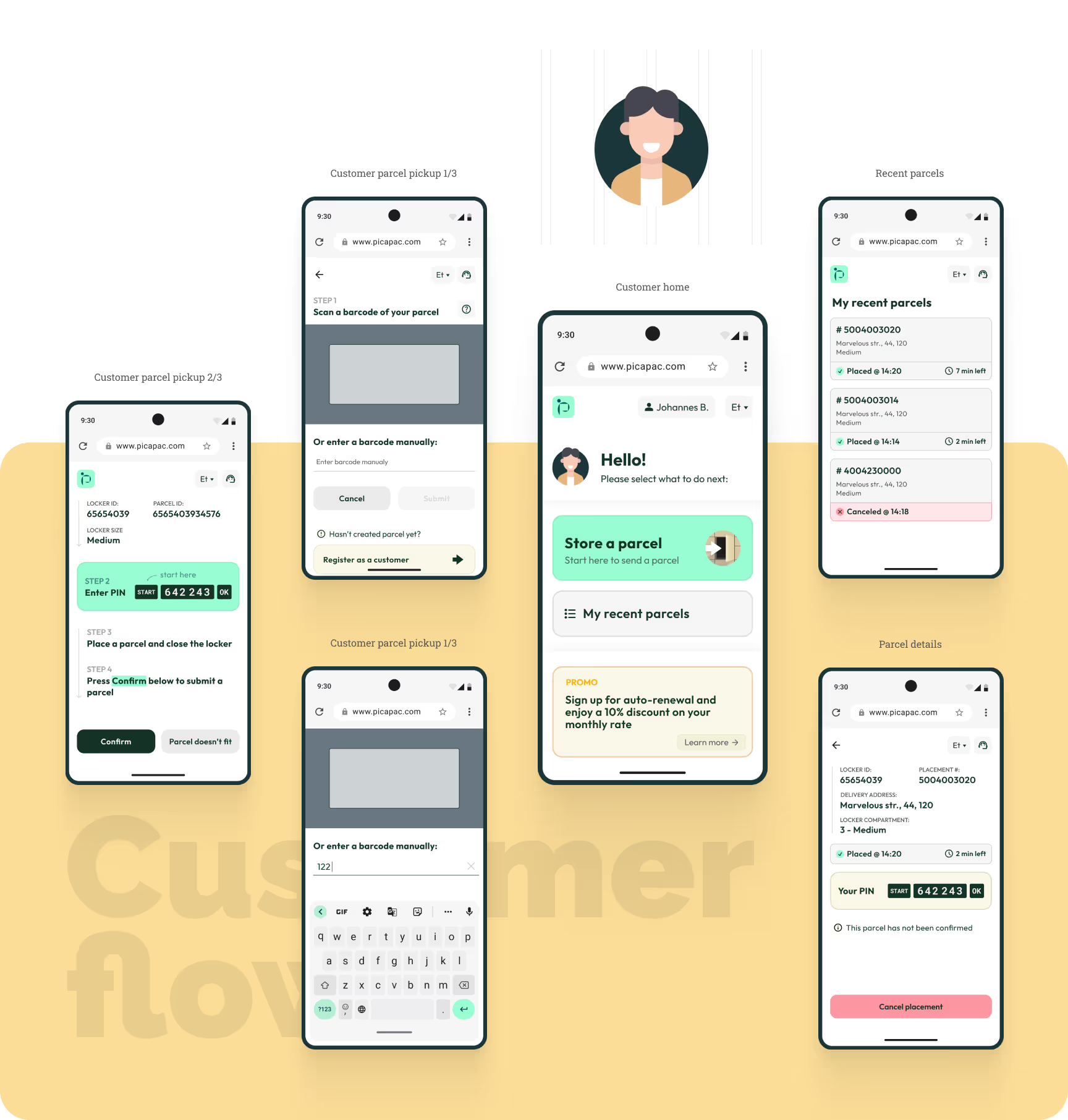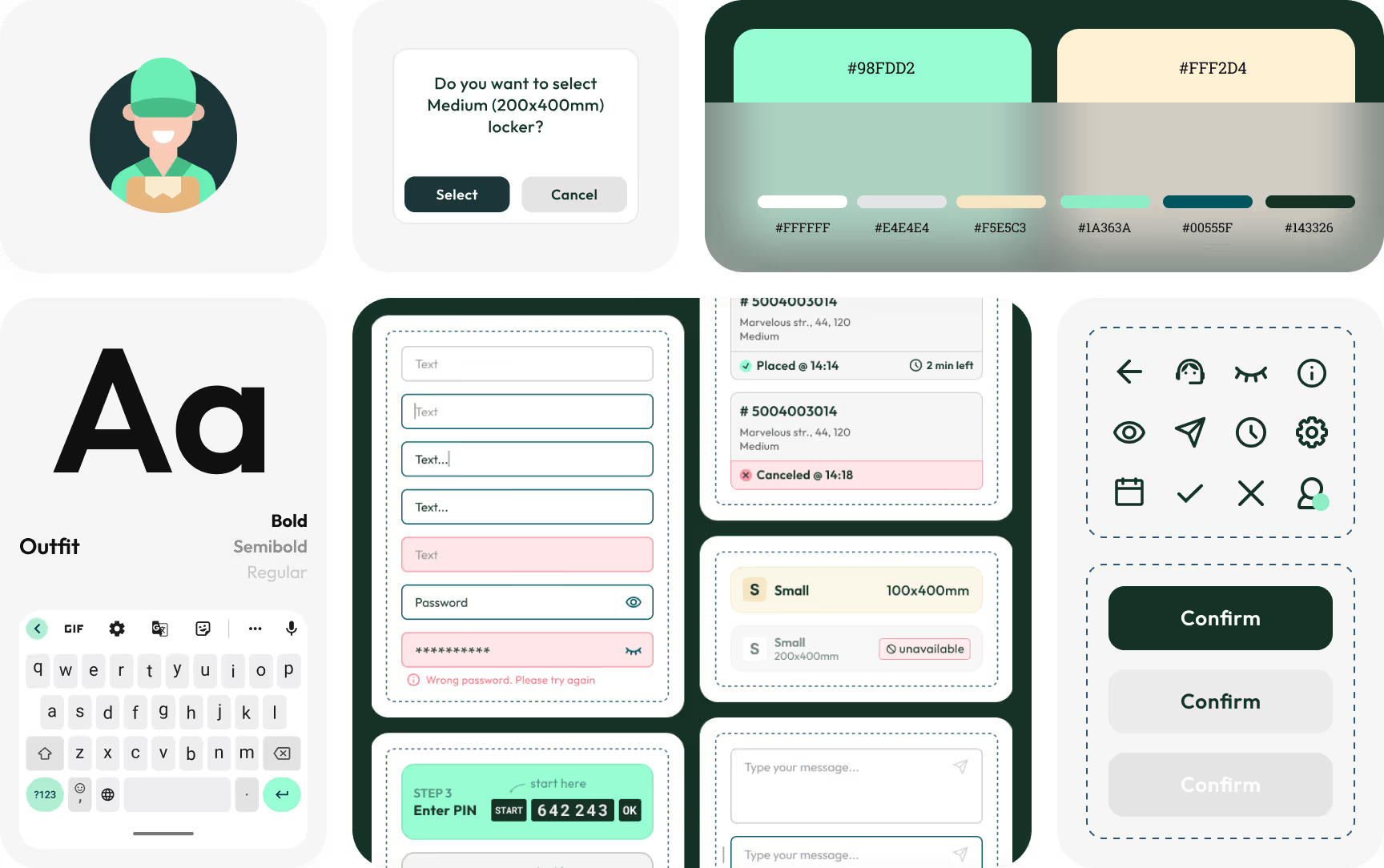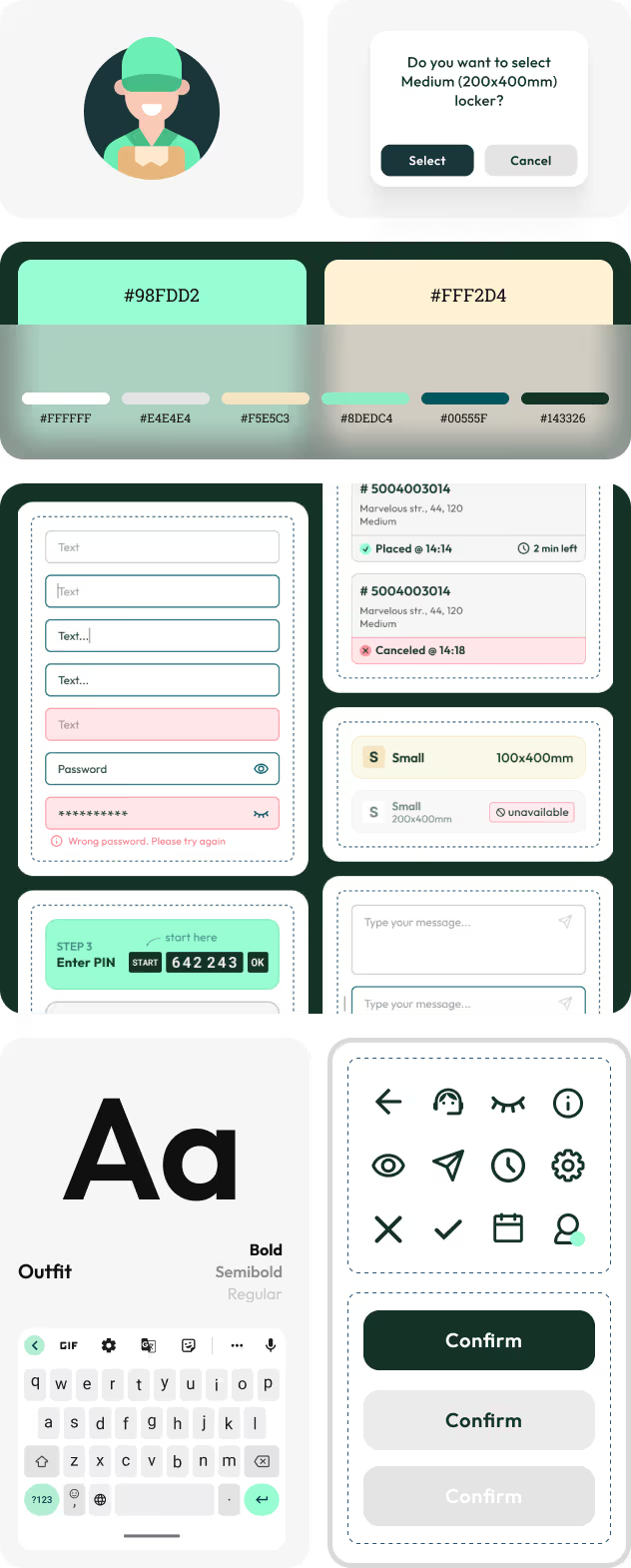The Context
Before we start, to comply with my non-disclosure agreement, I have omitted confidential information in this case study. All information is my own and does not necessarily reflect the views of Picapac, Pacelsea, Jetbeep and Omniva.
Picapac (owned by Omniva) is a network of community parcel lockers in Tallinn, Estonia, where parcels can be left by all courier companies, grocery stores that deliver to homes, and private persons. As name says it is a parcel locker, which is intended for communities, apartment buildings, commercial properties and generally to the areas, where big parcel machines have not yet reached.
Jetbeep, a long-time partner and solution provider for Omniva, was commissioned to design and develop web application for customers and couriers of Picapac parcel network.


